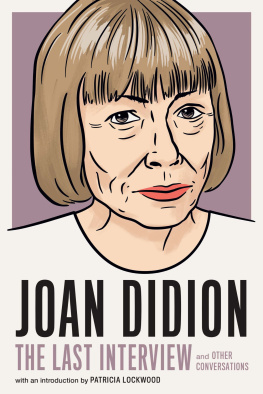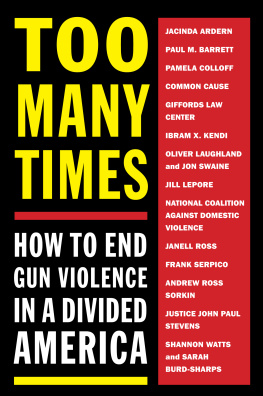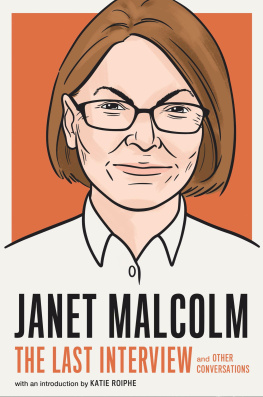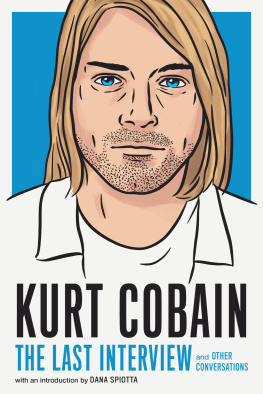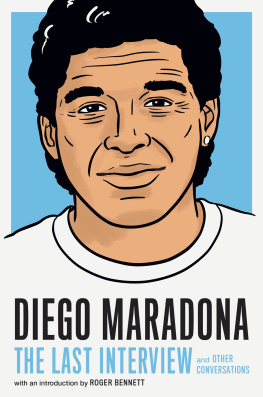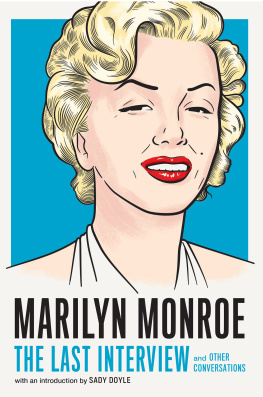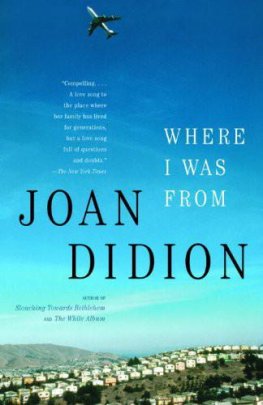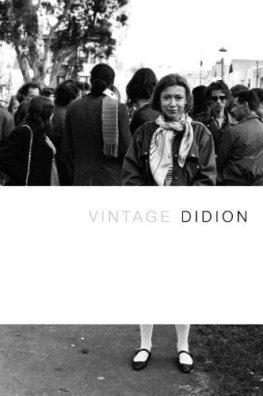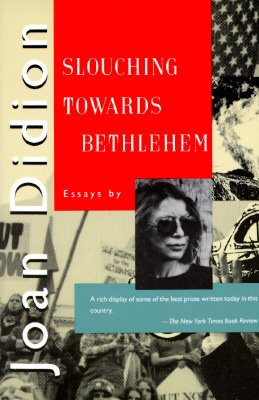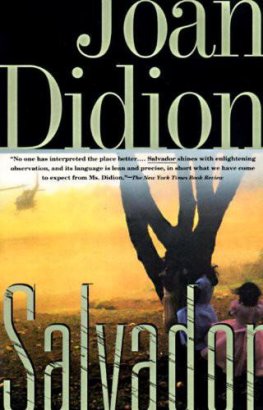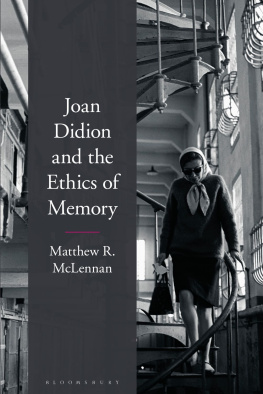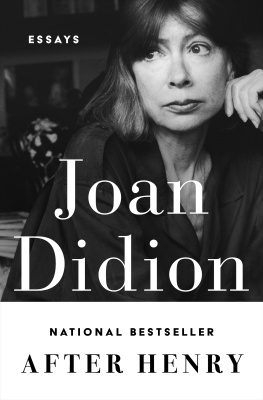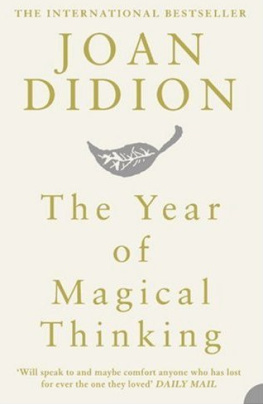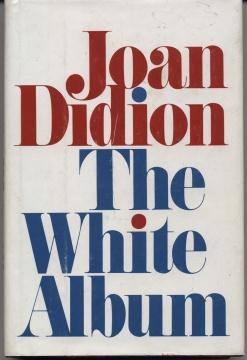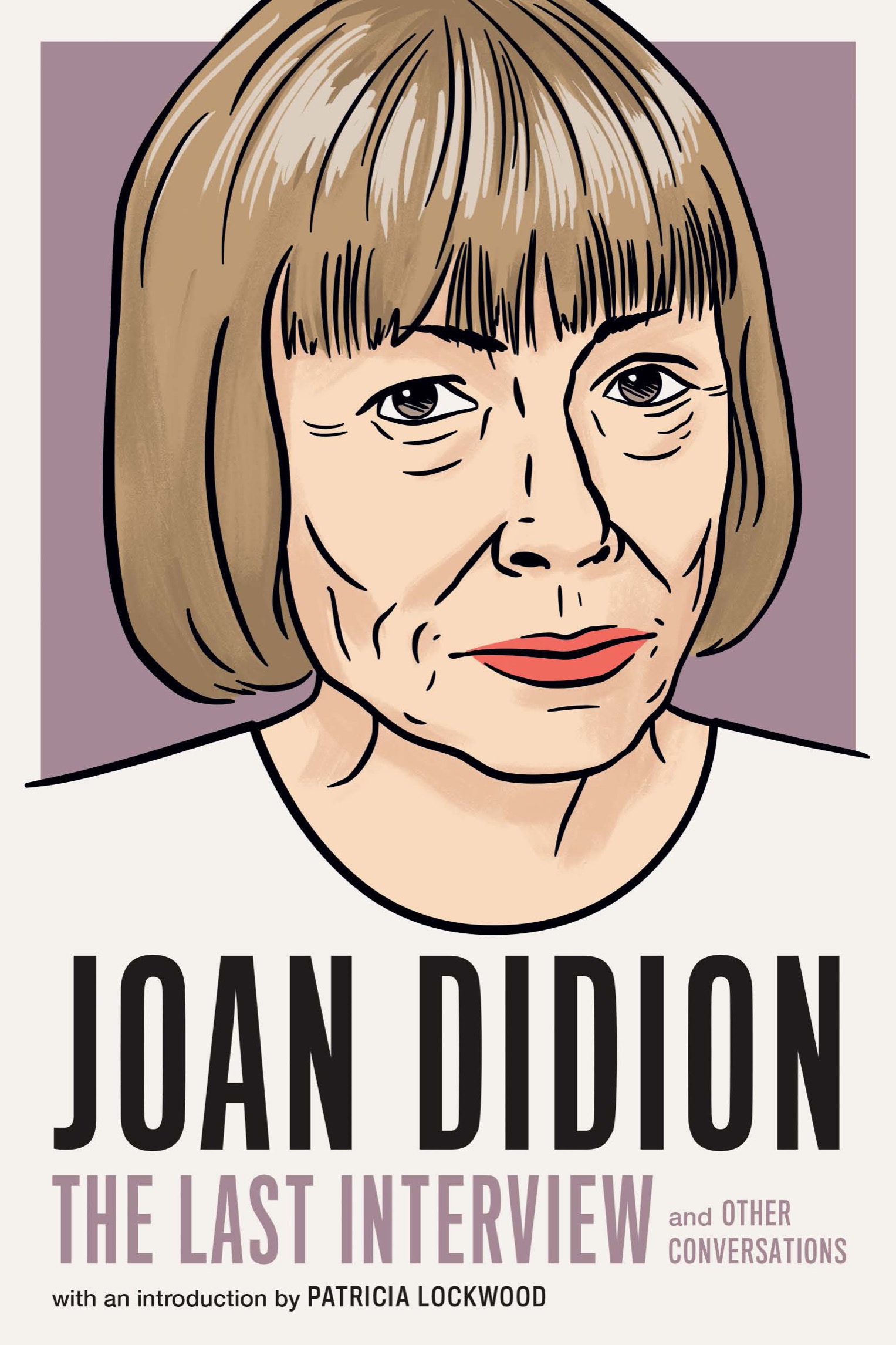INTRODUCTION
PATRICIA LOCKWOOD
The first thoughts about Joan Didion are not reasonable. The present literature about her is a hagiography that does not entirely trust itself; there is a vacancy at the center of it that I call the but surely. But surely if these essays were published now, the hagiography says to itself at three in the morning, they would meet with a different reception? But surely if she wrote today, her ideas about feminism would be more in line with ours? But surely, for all her pointillism, she is failing to draw the conclusions we would most like to see? The hagiography turns the pillow over, looking for a cool spot. How much can we really rely on someone who loved the Doors? Why do all her last lines give the impression that shes speaking from beyond the veil? What, in the end, is she actually saying? But surely she has told us that herself, and all along. What she is saying, standing in the corner of every piece, holding her yellow legal pad and watching, is: I was there.
In a 2017 documentary directed by her nephew Griffin Dunne, this three-in-the-morning question is absent. It begins with a bridge and a blur, close-ups of bare feet and fresh typewriter ink. A rat crawls over a hippie, to show that in the Swinging Sixties, anything can happen. When Didion herself appears, her mouth is bright with lipstick and amused. Her gestures are as large as fireworks. She puts her whole self into the process of speaking, moving her hands as if shes flinging handfuls of certainty away from her body. Charcoal cashmere and a slender chain; her hair the correct camel of a good coat. In a scene where she reads her own writing, she looks happy, and tastes one or two words longer than the others, for their well-chosenness. It calls to mind Maria Wyeth in Play It as It Lays, distinguishing between the right bracelet and the amusing impersonation of the right bracelet and the bracelet that was merely a witless copy.
Still, there are oversized clues to the fact that the subject is out of the ordinary. At one point Dunne asks her how it felt to see the five-year-old child on acid when she was reporting in Haight-Ashbury. Her face works, and you are expecting her to say: It was horrifying. Instead a light breaks, and she says: It was gold.
I thought of her essay about John WayneDidion loved him, and not just because he gathered the whole American West in a man. It was also because, as Katharine Hepburn observed, it was so thrilling to lean against him. Great like a tree, a place to rest. And didnt she want to rest? Werent her burdens so heavy? In youth she had rested against the strength, the solid thereness of the West; in adulthood, didnt she become paralyzed when she felt it could no longer hold her? When she headed to San Francisco in 1967, wasnt it because she suddenly saw America as a power that could no longer shoulder its people?
Order, she sought order. I have a very rigid sense of right and wrong, she told Sara Davidson in 1977. Behavior is right or wrong. I was once having dinner with a psychiatrist who told me that I had monocular vision, and there was no need for everything to be right or wrong. Well, that way lies madness.
There is no new information here, because we have had it already from Didion herself. We know she was born in 1934, and we see the disturbed and settled dust of the Sacramento Valley where she was raised, and we hear the family conversations about land changing hands. Her father, Frank Reese, an army air corps officer, was dogged by depression to the point of hospitalization. Her mother, Eduene, last in a long line, stamped with all the attributes we might expect a woman named Eduene to have, and provider of the particular totems her daughter would come to assign weight to in her turn. We are familiar with the insistently ironic first story Didion wrote at the age of five, in which a freezing woman wakes to find she is actually dying of heat at the edge of the desert. We know about the seven years at Vogue, after Berkeley, where she learned to choose the right word; we know about the forty-year marriage to John Gregory Dunne, who was between me and the worldthough it is surprising to hear her speak in Dunnes documentary of how it happened: Well I went to Hartford, and fell in love with his family, and determined that I was going to marry him. And did. Here her face becomes heavy with the curse of heterosexuality. I dont know what fall in love means. Its not part of my world. But I do remember having a very clear sense that I wanted this to continue. I liked being a couple. I liked having somebody there. It could not have been somebody who wasnt a writer. Only because that person would not have had any patience with me.
Coca-Colas in the morning. Yellow Corvettes and Vanda orchids, the shuffle of the surf in Malibu and the view from the window of the Royal Hawaiian Hotel. There are the beads on her newly born daughters wrist that spell N. I. for No Information; there is the territory on the map for which they named her, Quintana Roo. There is John baptizing Quintana in the sink the night they adopted her so that she might not, God forbid, go to limbo. There he is at the dinner table with his left hand raised, slumped motionless and Didion saying, automatically, Dont do thatand there is Quintana at 39 in the ICU, dying of acute pancreatitis. We can even, if youre still with us, travel all the way back and tell you how Didion is descended from people who parted ways with the Donners out West, which means the story she was raised with was one that showed how it could all go to hell in an instant, how unexpectedly a party could turn into people eating each other. We know enough for her to become a background against which we try to make sense of the rest.
I have figured out her rhythm, I once told a friend in a diner in Iowa City, though I will not tell you what I ate, or what I was wearing. (A hamburger? Some sort of shirt?) Her sentences are smooth, are smooth, are smooth, and then three-quarters of the way through the landing gear drops down. Her syntax returns to itself at the end, because it belongs to the structures of Henry James. This, combined with a straightforwardness of diction from Hemingway, gives you the sensation that you are going somewhere, then landing. And all the while youre flying, music is piped in, poetry, a high-toned jingle in the collective head.
I recalled that as I read South and West, which must hold a curious place in Didions oeuvre as the book she could not write. The second section is comprised of notes she took during the Patty Hearst trial, which eventually led to a broader book about California called Where I Was From. (I prefer these notes to that book; they exhibit a murderous compression.) The first section, and the majority, is comprised of notes she made during a month she spent in the South with her husband in 1970; at the beginning, she explains that, at the time, I had thought it might be a piece.
It was not. The elements are there: around the hotel swimming pools, the Confederate flag towels contrast with her own cosmopolitan bikini. She writes of trains, highways, snakes, kudzunetworks and infrastructure, which she understands and on which she relies, versus biology, overgrowth and festering, which threaten to suck her in and incorporate her. She interviews the white owner of a black radio station. The dialogues of strangers shed their usual light. When its all too much, she escapes to the cool air-conditioning of the mall. Her husband drives but is not there. He is not much mentioned, except when she says we.

